
“Hearst Magazines and Yahoo may earn commission or revenue on some items through these links.”
We’re officially entering spritz season. In fact, we even named one particular spritz the drink of the summer. Other people opt for bottles of refreshing white and rosé wine when the weather heats up. But if you live in a bigger city or spend time with younger drinkers, there’s a good chance that you’ve seen people sipping orange wine in the summer.
Orange wine is one of the most popular topics in the wine world right now. And depending on who you ask, they either love it or hate it. It’s often conflated with the larger category of natural wine, but there’s a lot that makes this wine distinct. It can vary in color from pastel orange to a deep copper. There’s a wide range of flavors and styles to choose from, too. If you’re hesitant to try it, don’t be! There’s truly an orange wine for everyone.
We chatted with Sam Hueker, Manager of Customer Experience and Wine Clubs at SommSelect, about the origins, flavors, and misconceptions about this trendy category. We’re laying out all the information you need (including bottle recs) so you can shop confidently and enjoy orange wine all summer long.
What Is Orange Wine?
Many wine lovers may be unfamiliar with orange wine, so it’s easy to assume that it’s a new frontier in the industry. But that couldn’t be further from the truth. “There’s a deep, rich history with orange wine,” says Hueker. “Historically, it’s been made for thousands and thousands of years.”
In fact, orange wine can be dated back to 6,000 B.C.E in what is now the country of Georgia—a place widely believed to be the birthplace of winemaking. Vintners originally would collect grapes in large clay vessels, seal them with beeswax, then bury them underground.
But what makes them orange can be attributed to a process called maceration. On the most basic level, this means the grapes are fermented with their skins. This technique is so integral to making orange wine that many instead refer to the category as “skin-contact” wine.
“Think of an orange wine as white wine made in the red wine process,” says Hueker. Macerating is commonly used to make red wine in order to deepen the color and add more body. Orange wine uses this same technique with white wine grapes, but the skins just have less pigment. So instead of a deep red, the resulting wine is some shade of orange. By contrast, rosé is nearly the opposite. The wine gets its pink hue from red grapes that have minimal maceration.
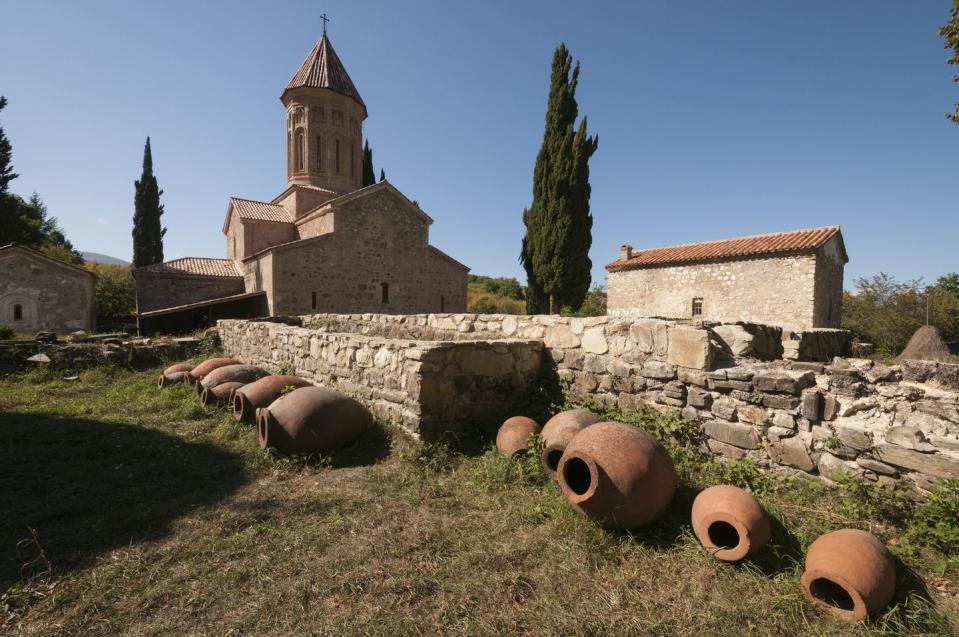
What Does Orange Wine Taste Like?
Just like with any other type of wine, its taste will vary depending on many different factors. The varietal of the grape, the environment of the vineyard, and the winemaker’s individual style all can impact orange wine’s flavor.
In general, orange wine tastes more similar to other types of white wine by nature of the grapes used. “A common baseline for orange wine is that it’s more floral, citrus-forward, and herbaceous,” says Heuker. “It typically leans more towards savory flavors than fruity and sweet.”
Naturally, one of the most important factors is how long the wine was in contact with the skin. Some orange wines are only macerated for a few hours, which lends a lighter, cleaner flavor and more subdued color. On the opposite end of the spectrum, other orange wines can be macerated for several months. These wines have a deep, intense hue that verges on amber. Flavor-wise, you can expect these types of orange wines to be more tannic and savory.
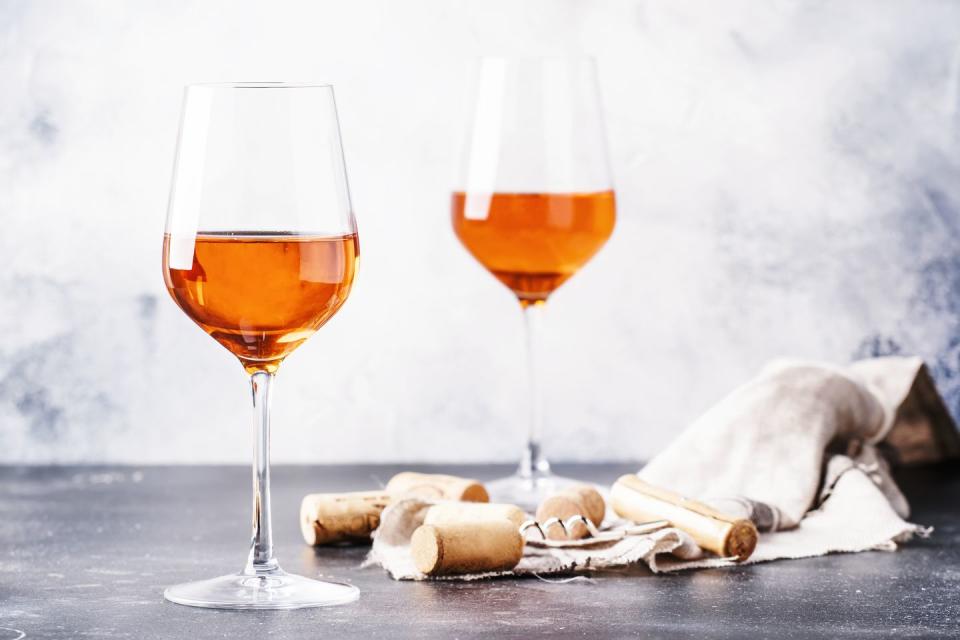
Is Orange Wine The Same As Natural Wine?
They’re not the same thing. It’s easy to conflate the two because of their growing popularity among younger drinkers. But not all natural wines are orange, and not all orange wines are natural. There are, however, processes and techniques that are shared by both. And it mostly comes down to the skins.
Beyond lending color and body to wine, grape skins also bring with them a unique flora of native yeast. The air we breathe is full of natural yeast that sticks to the surface of the grape and ultimately helps kickstart fermentation. Natural winemakers solely rely on this native yeast to make their wine. That’s also true of some, but not all, orange wine producers.
“How does that impact the flavor?” you may ask. Think of it as the difference between a loaf of sourdough and a loaf of sliced sandwich bread. The commercial yeasts used to make your average loaf of bread and wine have just one type of yeast, while there are hundreds of strains floating around in the air.
This combination of yeast makes for a less consistent loaf of bread or bottle of wine, but the resulting flavor is much more complex. With more experimental styles of orange wine, that can often include a fermented, almost kombucha-like funk. That’s why many lump orange wine into the natural wine category—but it’s not accurate to say all orange wine tastes that way.
“It’s a big misconception in the wine world,” Hueker says. “There are more traditional wines that don’t necessarily have that funkiness you can often find in the natural wine movement.”
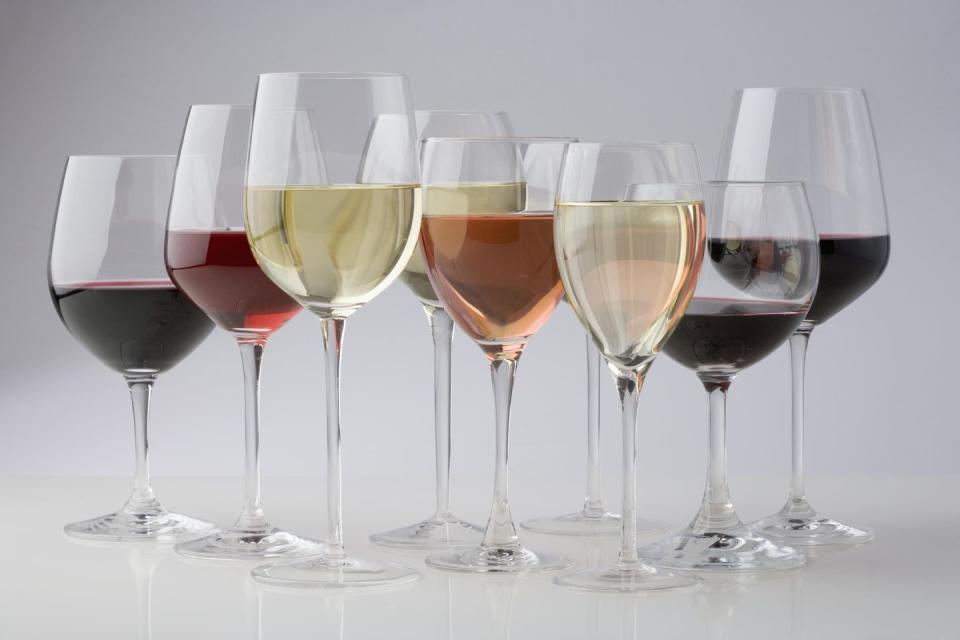
How Should You Drink Orange Wine?
Since it’s technically a white wine, a safe bet is to keep it slightly chilled. But no surprise here: it also depends on how much skin contact it had.
Lightly tinted orange wines can stand up to cooler temperatures of around 55°. Deeper, more intense oranges that have more body should instead be kept slightly warmer. The tannins from the skin are slightly astringent and can become almost unpleasant when cold. So if your orange wine is on the darker side, try enjoying it slightly below room temperature (around 65°).
As for pairing it with food, orange wines are super versatile. “You can go a lot bolder,” says Hueker. “You can pair them with curries, spices, grilled meats, and even strong cheeses.”
They’re also a great beverage to sip before starting a meal or while transitioning from dinner to dessert. “It’s great for when you’re coming off of a red wine but don’t want to immediately go to something citrusy and acidic,” Hueker says.
Ready to pick up a bottle for yourself? We’re here to help! There are so many wine regions that specialize in orange wine that are worth exploring. Here are some of our favorite spots:

Georgia
To best understand orange wine, it’s worth trying a bottle from the place that started it all. Some of the native grapes found in the country of Georgia include Rkatisiteli, Kisi and Mtsvane. This wine is made the old-fashioned way in subterranean earthenware vessels and has relatively low skin contact. It’s affordable, soft and mild in flavor, and super easy to drink.
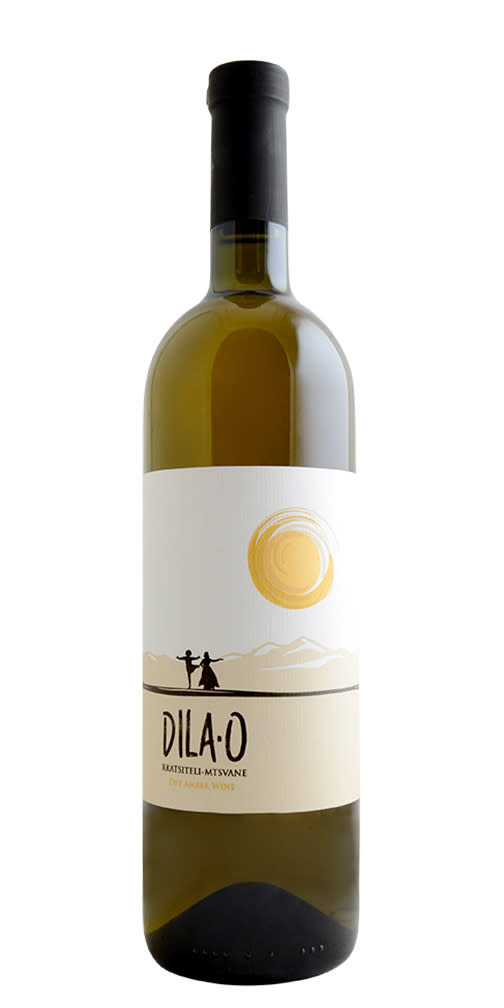
Shop Now
Georgia
$18.96
astorwines.com
Astor Wine & Spirits
Greece
Another area that specializes in older methods of making orange wine is Greece. The country’s sub-region of Ioannina is well known for their semi-sparkling wine. Similar to a French pét-nat, this unfiltered wine is bottled partway through the fermentation process, and the residual yeast naturally carbonates the wine inside.
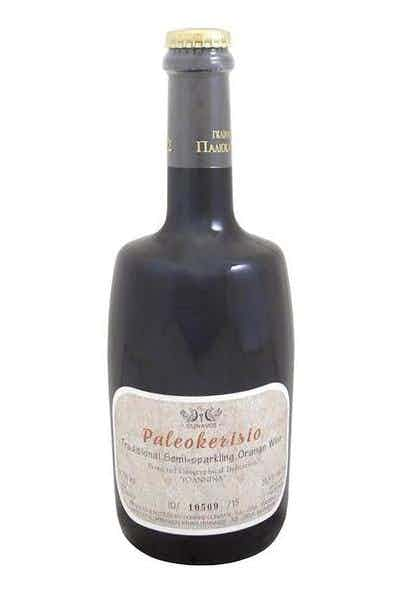
Friuli-Venezia Giulia, Italy
You can find a lot of orange wine throughout Italy, but there are two regions that are especially worth trying. Friuli-Venezia Giulia, located in the northeastern corner of the country, is one of Hueker’s favorite sources of orange wine. She describes the flavor of this wine as resembling “a truly ripe cantaloupe with the perfect amount of sweetness.”
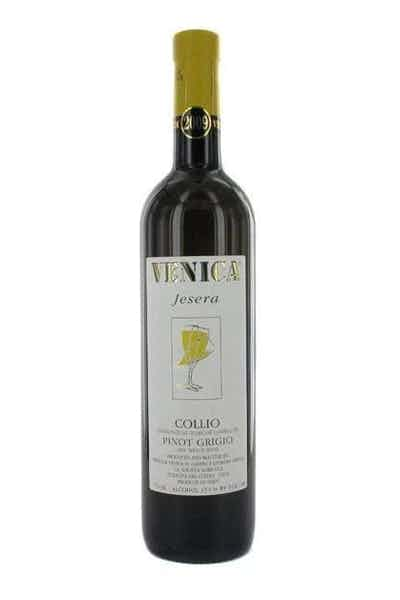
Shop Now
Friuli-Venezia Giulia, Italy
$25.99
drizly.com
Drizly
Sicily, Italy
Down in Sicily, you can also encounter incredible orange wine. The climate is warmer, which brings out more intense, mineral-driven notes than the floral flavors you can find in Friuli. Alessandro Viola is one of the region’s most renowned producers and exclusively uses grapes indigenous to the area.

Shop Now
Sicily, Italy
$26.95
primalwine.com
Primal Wine
France
You can find both old and new school orange wines throughout France. One vineyard making waves worldwide is Domaine Matassa in Languedoc-Roussillon. This wine is made from grapes grown on 50-year-old vines.
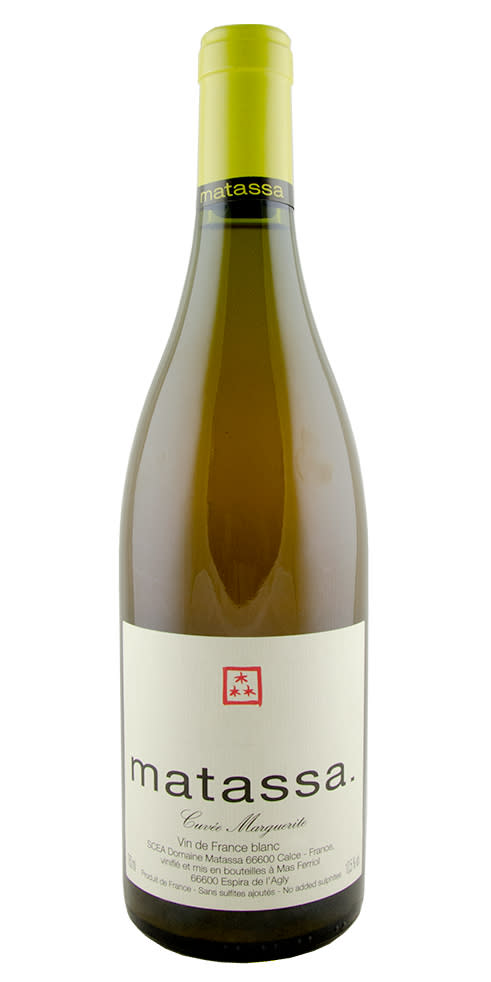
Shop Now
France
$46.96
astorwines.com
Astor Wine & Spirits
United States
The orange winemaking industry in the United States is varied, but generally veers more experimental. This wine from Ruth Lewandowski pairs wines native to France, Italy, and Austria for a uniquely bright and bold bottle.
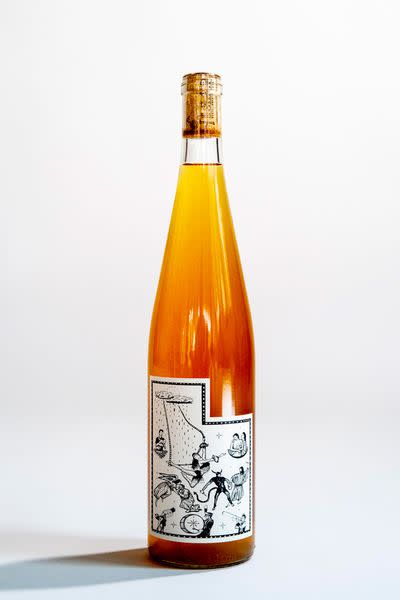
Shop Now
United States
$27.00
obtainwine.com
Ruth Lewandowski
You Might Also Like
